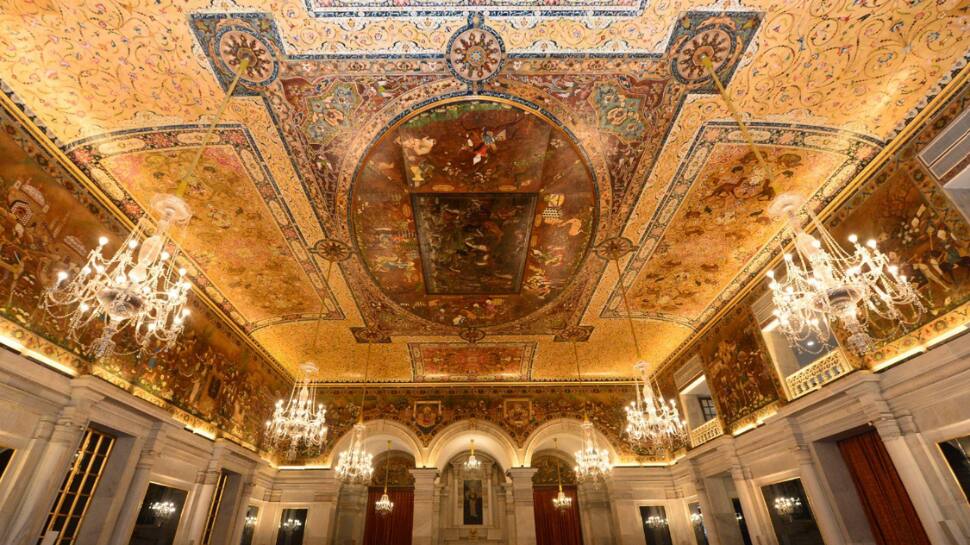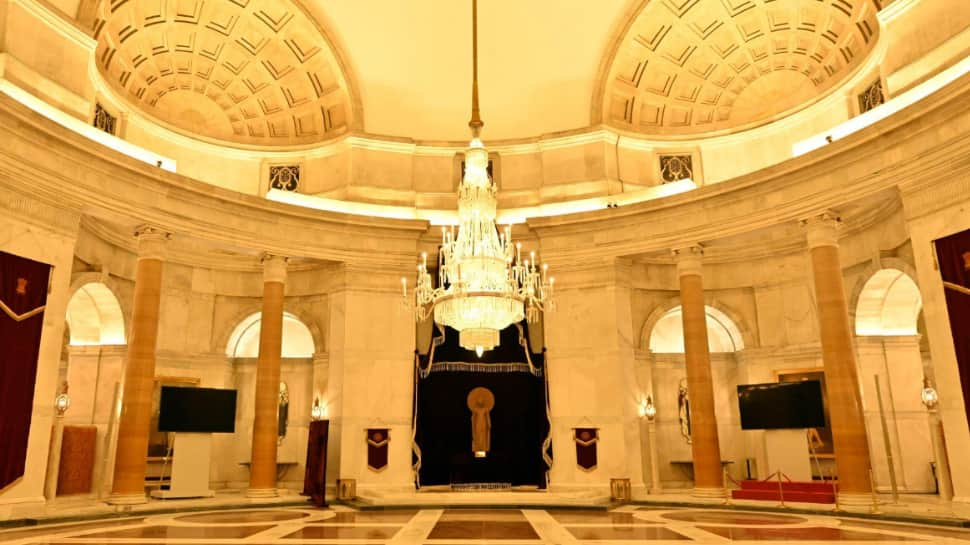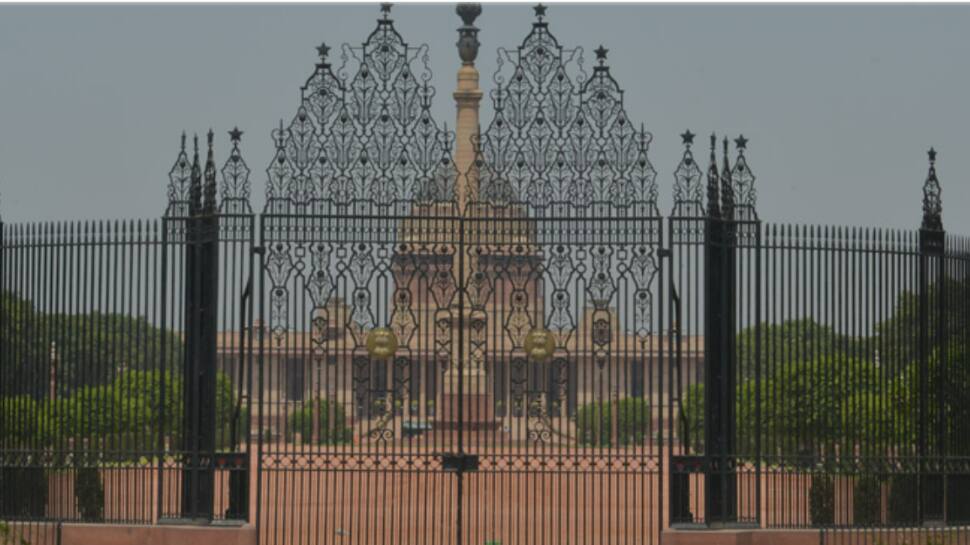)
Designed by renowned architects Sir Edwin Lutyens and Herbert Baker, Rashtrapati Bhavan is a striking blend of Indian and Western architectural styles. Construction began in 1912 and took 17 years to complete, with the building being finished in 1929.

Rashtrapati Bhavan, the official residence of the President of India, symbolizes the nation's democracy and its secular, pluralistic, and inclusive values. The four-story building features around 340 rooms of various sizes. Walking through its numerous chambers, anterooms, corridors, courts, and galleries would take approximately three hours.

Originally built as the Viceroy’s House to serve as the residence of the British Viceroy, the building was renamed Government House after India gained independence on August 15, 1947. During Dr. Rajendra Prasad’s presidency, it was renamed Rashtrapati Bhavan, marking its role as the residence of India’s head of state.

Visitors to the Ganatantra Mandap, the central hall of Rashtrapati Bhavan, ascend thirty-one wide steps and pass through impressive pillars, entering through a large teak door decorated with brass paint. The layout of Rashtrapati Bhavan was designed to separate different areas, ensuring privacy, protocol, and functionality. The approach, known as Kingsway, offers a grand and theatrical reveal, with the building slowly unfolding as visitors move through the forecourt and arrive at the portico.

The grand gates of Rashtrapati Bhavan are an artistic masterpiece. Six meters wide and twenty-six feet high, these wrought iron gates mark the boundary of the presidential estate. A long grille extends from Gate No. 2 on the southern side to the northernmost point of Rashtrapati Bhavan, standing fourteen feet tall. There are a total of 38 gates which are heavily guarded.

Elephants, a symbol of Indian culture, are featured prominently in the design. Revered in religion and known for their strength in battle, stone elephant motifs adorn the front gates, symbolizing both "might" and "serenity."

Inside Rashtrapati Bhavan, visitors will find twelve towering pillars adorned with intricately carved bells, inspired by Hindu, Jain, and Buddhist temple designs. The bells are modeled after those in the Moodabidri Jain temple in Karnataka. Other Indian elements, such as chhajjas, chhatris, jaalis, and motifs featuring elephants, cobras, and temple bells, further emphasize its deep Indian roots.